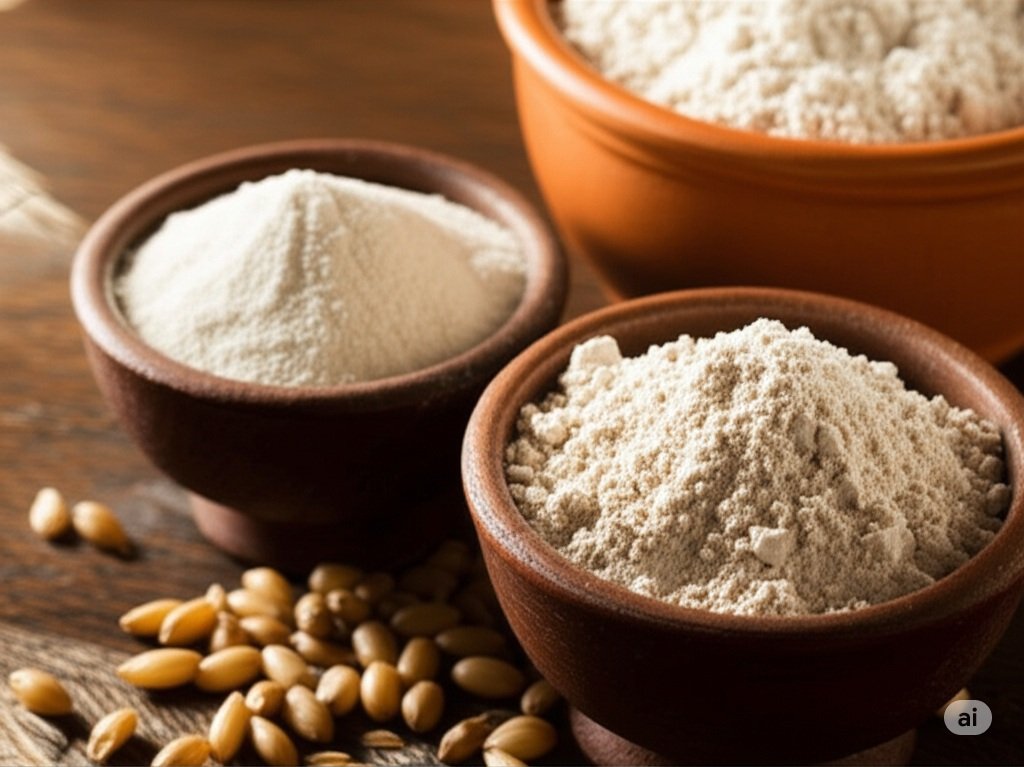Is Your Roti Really Healthy? Choosing the Right Atta for Better Health


Love rotis? Discover if your daily bread is truly nourishing! Learn to choose the healthiest atta for your well-being and diet.
For many, especially those with roots in South Asia, roti is a staple food, a comforting part of daily meals. However, with increasing awareness about nutrition, it’s natural to wonder: is your roti actually contributing to your health? The answer, while seemingly simple, has nuances, largely depending on the type of atta (whole wheat flour) you choose.
The Foundation: Whole Wheat Atta
Traditionally, roti is made from whole wheat atta. This type of flour is milled from the entire wheat kernel, including the bran, germ, and endosperm. Because of this, whole wheat atta retains a significant amount of fiber, vitamins, and minerals. Furthermore, the fiber content aids digestion, helps regulate blood sugar levels, and can contribute to a feeling of fullness, which is beneficial for weight management. Also, whole wheat is a good source of essential nutrients like iron and B vitamins. Therefore, a roti made from good quality whole wheat atta can certainly be a healthy addition to your diet.
Beyond the Basics: Exploring Different Atta Varieties
While whole wheat is the standard, the market now offers a variety of atta options, each with its own nutritional profile and potential benefits. For instance, multigrain atta, as the name suggests, is a blend of different grains like wheat, barley, millet (like bajra and ragi), and sometimes even legumes. This combination can offer a broader spectrum of nutrients and fiber. Furthermore, some people opt for atta made from single alternative grains like jowar (sorghum) or besan (gram flour), especially if they have wheat sensitivities or are looking for gluten-free options. Additionally, these alternative flours can have unique benefits, such as jowar being rich in antioxidants and besan being a good source of protein.
Factors to Consider When Choosing Atta
Selecting the right atta involves more than just picking the most common variety. Here are a few factors to keep in mind:
- Fiber Content: Opt for atta that boasts a higher fiber content, as this is crucial for digestive health and overall well-being.
- Whole Grains: Ensure that the atta is genuinely made from whole grains and hasn’t been overly processed, which can strip away valuable nutrients.
- Ingredients List: If you’re choosing multigrain atta, take a close look at the ingredient list to understand the proportions of different grains used.
- Dietary Needs: If you have specific dietary restrictions or health concerns, such as gluten intolerance or diabetes, choose atta accordingly (e.g., gluten-free options like besan or jowar, or atta with a lower glycemic index).
- Freshness: Whenever possible, choose atta that is relatively fresh, as the nutritional value can diminish over time.
Making Healthier Roti Choices
Ultimately, making your roti healthier comes down to being informed about your atta choices. By understanding the benefits of whole wheat and exploring other nutritious options like multigrain or single-grain flours, you can significantly enhance the nutritional value of your daily bread. Therefore, take a moment to consider the atta you’re using – it’s a small change that can make a big difference to your health. Also, remember that variety is key to a balanced diet, so incorporating different types of atta into your meals can be a great way to reap a wider range of health benefits.
Recent Posts
A Gang’s Chilling Warning to Bollywood after the Kapil Sharma Cafe Attack
A recent incident at actor-comedian Kapil Sharma’s cafe has sent a chilling message through the… Read More
Modi and Putin’s Crucial Talk: Strengthening Ties Amid Global Tensions
Narendra Modi and Russian President Vladimir Putin recently held an important conversation, reaffirming the strong… Read More
The Bull and Bear Tussle: How Trump’s Tariffs Are Shaking Up the Indian Stock Market
Indian stock markets are on edge after new US tariffs. Will the Nifty50 and Sensex… Read More
Hope Amidst the Uttarkashi Flash Floods: Families Await News
Anxious families in Uttarkashi wait for news after flash floods. Discover the ongoing rescue efforts… Read More
India’s Unwavering Pledge: Farmers’ Interests Paramount, Says PM Modi
The nation recently witnessed a strong and clear message from Prime Minister Narendra Modi regarding… Read More
Beyond Flavor: Unveiling the Healing Powers of Indian Spices
Indian cuisine is renowned worldwide for its vibrant flavors and aromatic spices. However, these culinary… Read More